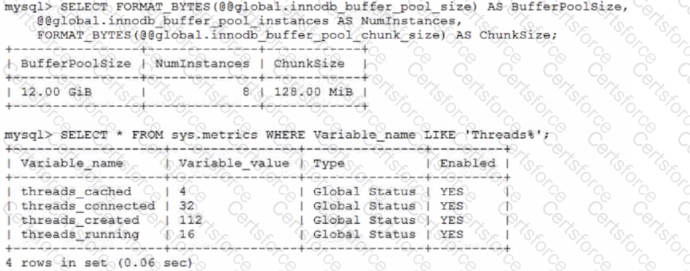Which two statements are true about MySQL Enterprise Backup? (Choose two.)
An existing asynchronous replication setup is running MySQL 8.
Which two steps are a part of implementing GTID replication? (Choose two.)
Your MySQL environment has asynchronous position based-replication with one master and one slave.
The slave instance had a disk I/O problem, so it was stopped.
You determined that the slave relay log files were corrupted and unusable, but no other files are damaged.
You restart MySQL Server.
How can replication be restored?
You are considering using file-system snapshots to back up MySQL.
Which three statements are true? (Choose three.)
Which statement is true about InnoDB persistent index statistics?
Which two are features of MySQL Enterprise Firewall? (Choose two.)
A valid raw backup of the shop.customers MyISAM table was taken.
You must restore the table. You begin with these steps:
1.Confirm that secure_file_priv=’/var/tmp’
2.mysql> DROP TABLE shop.customers;
3.shell> cp /backup/customers.MY* /var/lib/mysql/shop/
Which two actions are required to complete the restore? (Choose two.)
You have configured GTID-based asynchronous replication with one master and one slave.
A user accidentally updated some data on the slave.
To fix this, you stopped replication and successfully reverted the accidental changes. Examine the current GTID information:

You must fix GTID sets on the slave to avoid replicating unwanted transactions in case of failover. Which set of actions would allow the slave to continue replicating without erroneous transactions?
Which two are true about differences between logical and physical upgrades of MySQL databases? (Choose two.)
Examine this output:

Which change should optimize the number of buffer pool instances for this workload?